In post-1945 Japan — as in most of the states that lost in World War II — American occupation brought about radical political and social changes. In the 1946 to 1948 Tokyo trial (similar to Nuremberg), several leaders of the war cabinet were sentenced to death or long prison terms. It was also stipulated in the constitution that Japan cannot have its own armed forces, only Jieitai (Japan Self Defense Forces), a small number of volunteers for self-defense purposes.
Although Japan remained a monarchy, General Douglas MacArthur, commander of the occupying forces, forced Emperor Hirohito to sign the Ningen sengen (Humanity Declaration) and Western-style democratic parties appeared on the political palette. As a result of the peace dictatorship imposed on the Japanese Empire, the samurai spirituality, militarism, loyalty, and self-sacrifice that manifested themselves as a defense of the traditional order and a fight against materialism — the yamato-damashii (Japanese spirit) that is most appropriate to their collective consciousness — was severely repressed in Japanese society.
Lightning in summer and frost in winter.
The foot of Mount Fuji,
Is where the youth stand!
Our weapon is the soul of Yamato,
The sharp blade that we wield,
Reflect the color of the sky on a sunny day!
So move forward with courage. . .
Shield Society! [1] [2]
After post-war consolidation, the island nation experienced an economic explosion thanks to its well-organized elite education, investment in technology and innovation, and above all, the excellent work ethic of the Japanese people.
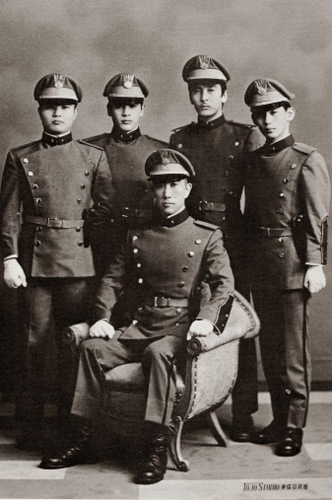
This economic prosperity was followed by increasing social welfare, of course. The consequences are well-known to Right-wingers but are worth repeating nonetheless. In modern welfare societies, the individual is much more vulnerable to leveling, emptiness, and rootlessness. While not to the same extent and depth as in the Western world, this trend has also prevailed in Japan since the second half of the 1950s. [2] [3] Amidst the mass of people flowing from the countryside into megapolises with rapidly growing populations, the individual soon lost his attachment to the traditional value system. In this rather chaotic spiritual vacuum, an alienated person could easily be steered in the wrong direction in the absence of firm spiritual orientations, especially as an inexperienced youth. This has been the case with most of the student movements in the 1960s under strong far-Left influence.
Recognizing this danger, Yukio Mishima, one of the most famous writers and artists of modern Japan, decided to take action.
Yukio Mishima was born in Tokyo in 1925 as Kimitake Hiraoka. Several samurais can be found among his ancestors. His genius for writing was already apparent in high school, and his first longer work was published in 1941. Shortly after that, he took the pseudonym Yukio Mishima. He completed his university studies after the Second World War and devoted himself exclusively to writing from 1948 onwards. He was a prolific artist with more than one hundred publications, including novels, dramas, essays, and short stories. He also performed in and directed plays and films and was nominated for the Nobel Prize for Literature a total of four times.
Amid the turbulent social conditions of the 1960s, his interest turned to traditional Japanese spirituality and respect for the emperor. The 1960 assassination of Inejiro Asanuma, leader of the Social Democratic Party of Japan, greatly influenced his turn to the Right. Just seventeen years old, Asanuma’s assassin Otoya Yamaguchi justified his action by defending the concept of the empire before committing suicide in prison.
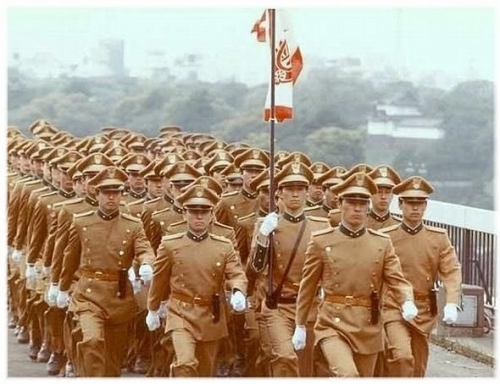
Mishima’s orientation was also reflected in his literary work. He has become very popular — and divisive at the same time — in Right-wing circles for works titled Patriotism (1966; published by the name of Sepukku in the Transylvanian Utunk magazine; also made into a film starring Mishima), Runaway Horses (1967-68), or The Voices of the Heroic Dead (1966). In his later work, he also sharply criticized the Emperor himself for announcing the Ningen sengen. My Friend Hitler (1968) — written for the stage — In Defense of the Culture (1969), and the Revolutionary Philosophy (1970) are considered his provocative and militant spirited works.
In the fall of 1968, he formed a private army for spiritual purposes: the Tatenokai (Shield Society) of 80 people, the aim of which is summarized in three principles:
- Communism is incompatible with Japanese traditions, culture, and history, and is against the imperial order.
- The emperor is the only symbol of our historical and cultural community and racial self-consciousness.
- The use of force is justified in light of the threat posed by communism. [2] [6]
Of course, Tatenokai’s numbers make it a symbolic army. But it is also in this that its strength and significance can be found, as Yukio Mishima was a master of symbolic politicization: he gathered the bravest and noblest youths of modern Japan into his elite guard, which showed a new quality in the face of ever-increasing deviation and decline. Tatenokai’s membership consisted mainly of young university students. They wore a brown-yellow uniform, and Mishima succeeded in getting Jieitai to provide military training to the members. Mishima often used the English name of the organization, Shield Society, and its abbreviation, SS, provocatively referring to the elite organization of National Socialist Germany, the Schutzstaffel.
The SS is an imaginary army. We don’t know when our time will come. Maybe it will never arrive; or perhaps as early as tomorrow. In the meantime, the SS is calmly ready. We don’t organize street demonstrations, we don’t have posters, nor Molotov cocktails, nor lectures, nor stone-throwing. We will only be determined to act at the last minute, as we are the least armed but most spiritual army in the world.[3] [7]
It is definitely important to examine the Right-wing paramilitaries and organizations that emerged in the second half of the twentieth century. In post-World War II welfare democracies, the militarist spirit lost much of its former appeal. The weakened Right-wing forces in Atlantic and communist Europe were unable to gain ground, due in part to the control of the reigning power, the lack of charismatic leaders of adequate capacity, and of the indifference that characterizes atomized society.
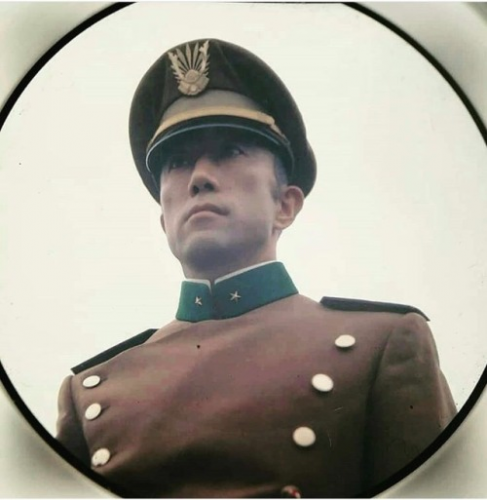
More serious autocratic initiatives tended to come from state authorities — that is, from above — mostly from the military, whose attempts had only a brief temporary success or were predestined to fail. Examples include the dictatorship of colonels in Greece, the Borghese coup in Italy, Antonio Tejero’s attempt in Spain, or — outside Europe — the majority of South American juntas. Civilian far-Right political movements (mainly in Italy and France) and cultural trends such as the skinhead movement often remained at the level where they started because of their low standards.
In the early 1990s, after the disintegration of the Eastern bloc, and in the second half of the first decade of the new millennium, the legal successors of several former organizations operating before and during World War II in Central-Eastern Europe reactivated themselves (for example, in Hungary, Romania, and Croatia) in order to cultivate the national traditions largely destroyed by the communist regimes and the multitude of socioeconomic problems associated with emerging liberal democracies. A lack of quality Right-wing and national elites, the almost-complete absence of appropriate intellectual orientations, and the work of agents and disruptors led to their decline.
What made Tatenokai different? It can be considered unique in terms of spirituality, purity, quality, and purpose among the post-War elite movements. Mishima thought of his private army:
I had a simple reason to create Tatenokai. Ruth Benedict once wrote a famous book called The Chrysanthemum and the Sword. These are the determinants of Japanese history: the chrysanthemum and the sword. After the war, the balance between the two was broken. Since 1945, the sword has not been dealt with. My dream is to restore that balance. To revive samurai traditions through my literary work and actions. That is why I asked Jieitai, so that my people could receive one month of training. [4] [8]
Mishima was also no stranger to open political confrontations. In 1969, he took part in a public and informal debate with the far-Left students of the University of Tokyo. Members of Japan’s existentialist generation in 1968, with their sympathy for communism, posed a serious threat to public life: they wanted to take their homeland out of the frying pan of capitalism and the US into the fire of communism and China. Mishima steered the debate on the subject of the emperor and the empire, pointing out the flaws of the ideology of his discussion partners. Mishima’s summary of the debate is striking: “Zengakuren students and I stand up for almost the same things. We have spread the same cards on the table, but I have the joker — the emperor.” [5] [9]
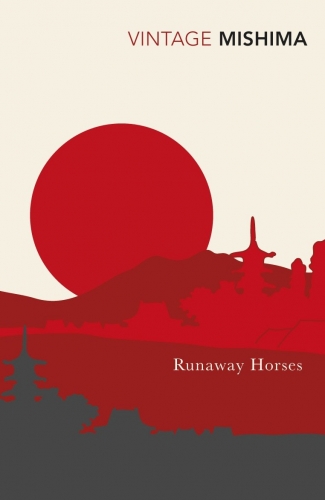
From the late 1960s onwards, Mishima consciously prepared for death, which was increasingly evident in his work. His interest turned to ritual suicide — sepukku, abdominal incision — yamato-damashii, and the reactionary 1876 Shinpūren rebellion, as well as the 1936 Ni Ni-Roku incident. In 1970, he decided he would die after the completion of his last work, The Decay of the Angel, and would use Tatenokai for this.
He found the most suitable comrades for the task in four members: Morita Masakatsu, Hiroyasu “Furu” Koga, Masahiro Ogawa, and Masayoshi “Chibi” Koga. The time for action came on November 25, 1970, when Mishima and four of his companions captured the commander, General Kanetoshi Mashita, at Ichigaya military base in Tokyo. He handed over his demands to the superiors, and then gave a speech from the central balcony of the building to the garrison’s soldiers: Only the army represented traditional Japanese values and spirituality. Its members represented Japan’s honor, and the Emperor should be given his absolute power back. The response from the majority of the audience was confusion and rejection. Mishima went back to the commander’s office after delivering his speech. Saving his honor before the emperor and the Homeland, together with Morita, he committed sepukku. [6] [10]
The emperor and modern Japan proved to be weak. Not Mishima, who consistently professed the institution of the empire, nor Tatenokai, who performed its task. Mishima was almost certain of the failure of his coup, yet he performed his last “stage” role with the genius of the artist and the dignity and honor of the samurai. This is well reflected in his statement to Jun Ishikawa shortly before his death:
“When I go out on stage, I expect the audience to sob. Instead, they burst out laughing.” [7] [11]
If you want to support Counter-Currents, please send us a donation by going to our Entropy page [12] and selecting “send paid chat.” Entropy allows you to donate any amount from $3 and up. All comments will be read and discussed in the next episode of Counter-Currents Radio, which airs every weekend on DLive [13].
Don’t forget to sign up [14] for the twice-monthly email Counter-Currents Newsletter for exclusive content, offers, and news.
Notes
This writing originally appeared in the monarchist anthology KIRÁLYSÁGBAN GONDOLKODUNK (WE THINK IN KINGDOM), edited by János Pánczél Hegedűs and Péter Uhel; Pro Regno Hungariæ Alapítvány, MMXVII.
See also VSZ’s “三島由紀夫 – Az utolsó szamuráj emlékezete [15]” in Stalker — Egy konzervatív forradalmár gondolatai, published November 25, 2010 (in Hungarian).
[1] [16] Excerpted from the Tatenokai march.
[2] [17] It is worth noting how Western tabloid media try to present the Japanese, their civilization, and their culture as superficially idiotic, narrowing them down for the laypeople to the annoying tourists, screaming and squeaking teen stars, microelectronics, snatched episodes of animated films, Godzilla, etc.
[3] [18] Henry Scott Stokes, Misima Jukió élete és halála (Budapest: Szenzár Kiadó, 2001), trans. Andrea Tóth, p. 217.
[4] [19] Stokes, 218-219.
[5] [20] Stokes, 251.
[6] [21] Stokes, 247.
[7] [22] A more detailed description of the Mishima coup is provided by Stokes (pp. 14-39) and Terebess [23] (in Hungarian).
[8] [24] Stokes, 318.



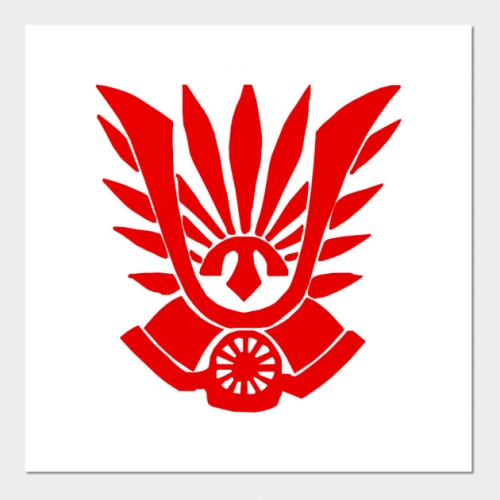

 del.icio.us
del.icio.us
 Digg
Digg
Les commentaires sont fermés.